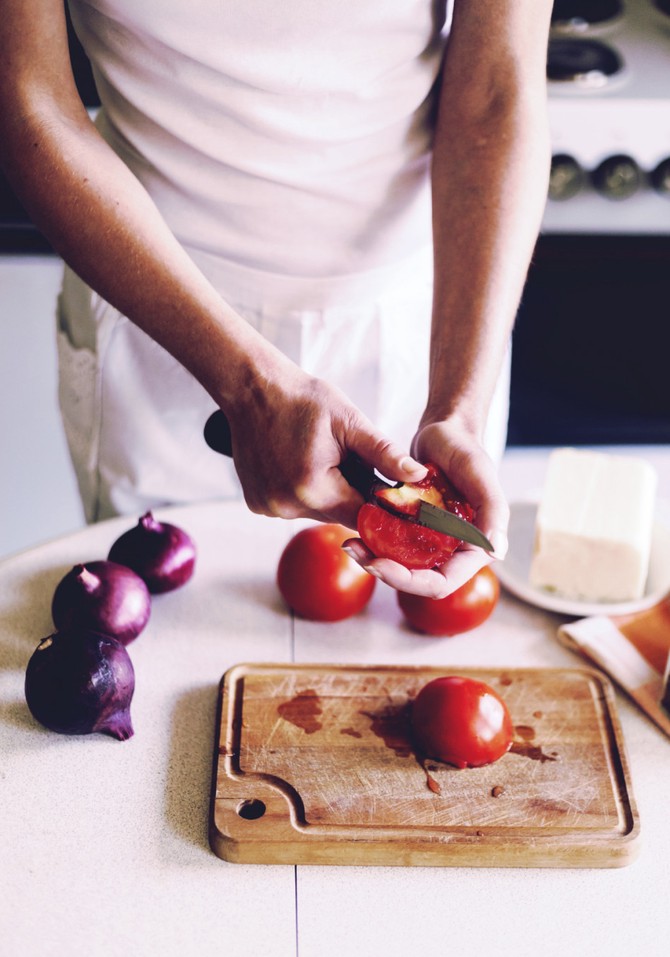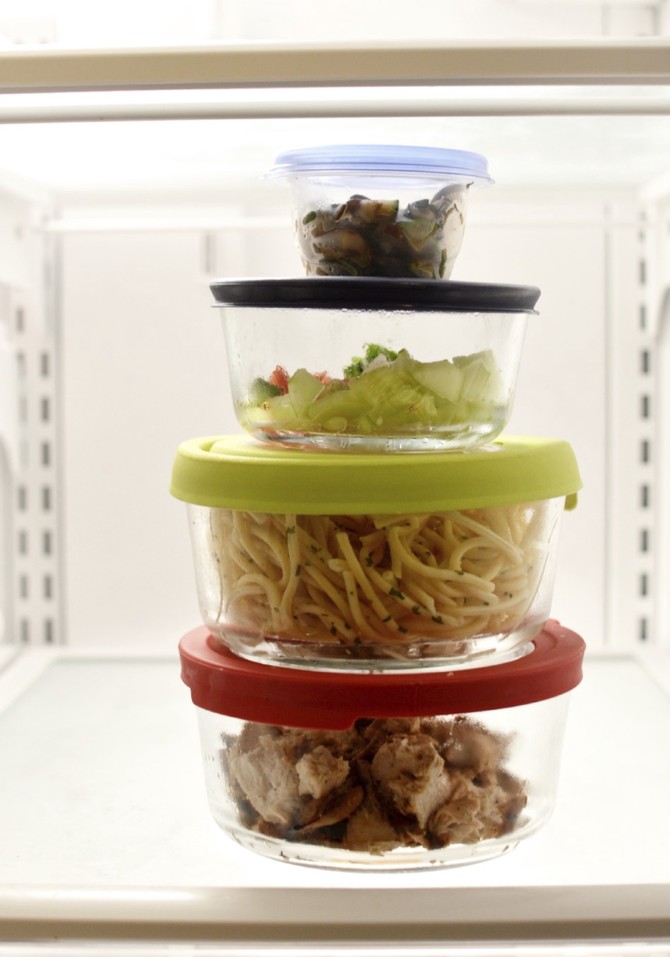6 Tips for Eliminating Food Waste at Home
Simple strategies for making sure nothing goes to waste.
By Jessica Migala

Photo: serenethos/iStock
Call it best-intentions grocery shopping. At the store, you promise yourself you'll cook a wholesome dinner every night—and the next thing you know, you're tossing wilted spinach and shriveled tomatoes to make room for takeout cartons and pizza boxes. To eat more nutritious food, you may need to do only one thing: Get smarter about how you stock your fridge, so you'll have fresh, enticing options at your fingertips. Here's how:
Buy a Thermometer
"People assume their fridge is cold enough, but in some cases it's not, and that increases risk of spoilage and food-borne illness," says registered dietitian Sara Haas, a spokesperson for the Academy of Nutrition and Dietetics. Bacteria that can make you sick thrive at temperatures between 40 and 140 degrees, so buy a fridge thermometer and stick with a setting no higher than 40 degrees. Even if your high-tech model has one built in, a separate thermometer is good, cheap insurance.
Buy a Thermometer
"People assume their fridge is cold enough, but in some cases it's not, and that increases risk of spoilage and food-borne illness," says registered dietitian Sara Haas, a spokesperson for the Academy of Nutrition and Dietetics. Bacteria that can make you sick thrive at temperatures between 40 and 140 degrees, so buy a fridge thermometer and stick with a setting no higher than 40 degrees. Even if your high-tech model has one built in, a separate thermometer is good, cheap insurance.

Photo: wwing/iStock
Make Friends with Your Freezer
Don't be afraid to put the deep chill on cheeses (hard grating cheeses like cheddar thaw best), milk (to bake with), egg whites, tomato-based products (like homemade pasta sauce), broths, wine (for future cooking, not drinking), herbs, and hardy greens like kale (blanching first helps preserve quality). And, of course, leftovers. Note: If you load up on produce at the grocery store or farmers' market, freezing the surplus immediately is the best way to preserve nutrients.

Photo: anandaBGD/iStock
Don't Judge a Fruit by Its Peel
Just because something doesn't look pretty doesn't mean you can't eat it. You can transform bruised or wilted foods by cooking them. Chop squishy tomatoes and simmer them into pasta sauce; they'll gain more lycopene, an antioxidant that may help lower cancer risk. Puree wilted carrots into a soup; when heated, their eyesight-preserving beta-carotene levels rise. Other ideas: Sauté limp lettuce, toast hard bread into croutons, or crisp stale tortillas in the oven.

Photo: melissabrock1/iStock
Remember FIFO
That's restaurant speak for "first in, first out." Stash newer foods in the back of the fridge, saving the front for stuff nearing expiration or that's been in there longest (i.e., Tuesday's leftovers should go behind Sunday's).

Photo: Rafal Olkis/iStock
Avoid Recipe Regret
Is your fridge stuffed with jars of sauces you've used only once? If you need just a tablespoon or two, you can probably find a simple substitute right in your kitchen, says Haas. When dinner calls for a spoonful of chili-garlic sauce, swap in sriracha. For tartar sauce, combine mayo, relish, and lemon juice.

Photo: Madzia71/iStock
Use Every Bit of Your Veggies
"Too many people throw away parts of produce that are edible," says Dana Gunders, a senior scientist in the Natural Resources Defense Council's Food & Agriculture Program and author of Waste-Free Kitchen Handbook. Her tips: If you don't peel squash before cooking, you'll get an extra dose of fiber. (The same goes for kiwis—eat them fuzzy skin and all.) Turnip greens are bursting with vitamin K. And while you might not want to eat fibrous kale stems in a salad, they're packed with antioxidant vitamin C, just like the leaves, and they make a great pesto.
By the Numbers Americans waste 21 percent of all edible food, according to the USDA. One 2015 survey estimated that the average U.S. household trashes roughly $900 worth of food annually.
By the Numbers Americans waste 21 percent of all edible food, according to the USDA. One 2015 survey estimated that the average U.S. household trashes roughly $900 worth of food annually.
From the June 2016 issue of O, The Oprah Magazine

